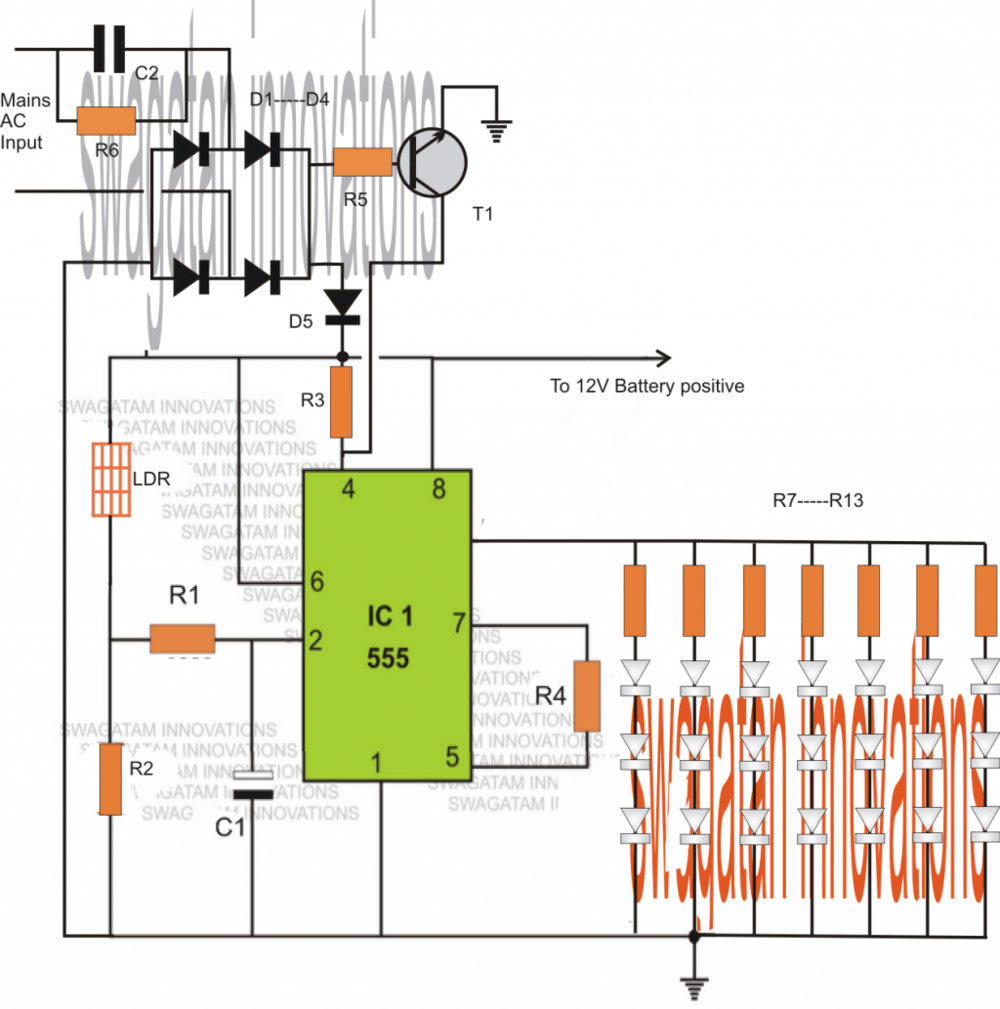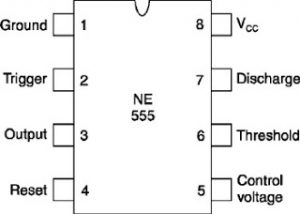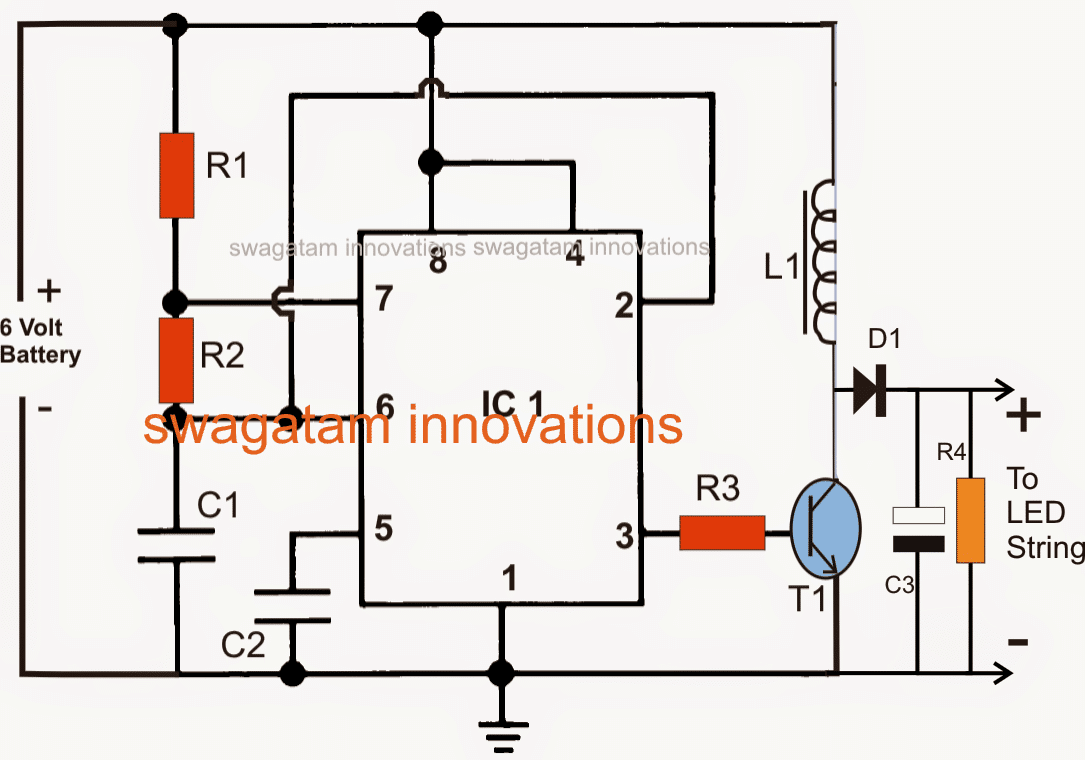The discussed 2 simple IC 555 based emergency lamp system employs just a single IC 555 and yet is able to switch more than 20 LEDs directly, it will illuminate the LEDs only during the absence of mains power and ambient light.
1) Using IC 555 as a Comparator
The proposed circuit is not only simple, it offers some very useful feature without involving too many components.
The use of IC 555 facilitates direct connection of the LEds across it's output pin#3, without needing an extra transistor driver buffer stage, although it may be incorporated in case more number LEDs are desired.
The IC is also configured as a light detector and furthermore a DC inverter.
Light Detection
The design has two features, 1) Mains outage detection, 2) Day night detection.
Whenever mains fails or in case of an outage, the lamp quickly detects this and automatically switches ON, to provide an emergency illumination in the premise
The light detection feature ensures that the IC switches ON the LEDs only in the absence of adequate ambient light.
The level of darkness or the level of ambient light at which the IC triggers the LEDs may be set by adjusting the value of R2. This is an added feature which allows customizing the triggering threshold.
The introduction of C1 offers yet another novel feature to the design, it offers some delay before the LEDs are switched ON once the above specified conditions are met.
That means C2 can be selected for getting certain time delay before the LEDs get switched ON.
Last but not the least, the IC also provides the facility which prevents the LEDs from illuminating for so long the AC mains stays active.
The reset pin of the IC is held at zero potential by the T1 during the presence of AC mains, the moment mains power fails T1 switches OFF connecting the reset pin#4 to battery positive, so that the IC is reset for the required triggering.
Just forgot to mention, the circuit also behaves like a trickle charger and keeps the associated battery fully charged and in a standby condition whenever in need.
Caution: The circuit is not isolated from AC mains, so be extremely careful while testing.
Circuit Diagram

Parts List
R1 = 2M2
R2 = 1M
R3, R5 = 10K
R4, R6 = 120K
R7----R13 = 330 ohms
LDR = any standard type having ambient light resistance around 30K and dark resistance to infinity.
D1---D4 = 1N4007
C1 = As required
C2 = 0.22uF/400V
T1 = BC547
LEDs = white, high efficiency, 5mm
Battery = 12V, 4AH
IC 555 Pinouts

LDR Image

2) Using IC 555 Boost Converter
The following emergency light circuit uses a very common voltage boost converter concept for making a group of white LEDs illuminate at relatively lower power supplies.
I have explained how to make this interesting and useful little LED boost emergency light circuit.
Yet again we take the help of the evergreen work horse, the IC555 for implementing the proposed actions.

Using IC 555 as the Main Component
The figure shows a very simple circuit configuration where the IC 555 has been rigged as an astable multivibrator.
In an astable multivibrator design the various components are wired such that the output generates trains of pulses which are self sustaining and keeps coming as long as the circuit remains powered.
In the present configuration the output of the IC which is the pin #3 generates pulses at a frequency determined by the resistors R1 and R2 and also the capacitor C2.
R2 may be typically adjusted or made variable type for enabling dimming control of the LEDs.
However here the value of R2 has been fixed for acquiring optimum brightness from the LEDs.
The pulses available at pin#3 of the IC is used for ddriving the transistor T1 which in turn switches in response to the positive pulses.
The switching of the transistor pulls the supply voltage through the inductor in a pulsed mode.
As we know when alternating or pulsed voltage is applied across an inductor it tries to oppose the current and in the process kick an equivalent high voltage for compensating the applied current force.
This action of the inductor is what constitutes the boost action, where the voltage is stepped to higher levels than the actual supply voltage.
How L1 Functions
The above functioning of the inductor has been exploited in this circuit also.
L1 boosts the voltage in an attempt to restrict the applied AC, this high voltage generated across the coil during the non conducting phases of the transistor is fed across a series connected LEDs for illuminating them under lower current levels.
This process helps to illuminate the LEDs at relatively lower power consumption.
L1 winding is not so critical, it is a matter of little experimentation, the number of turns, wire guage, the diameter of the core, all are directly involved and affect the boost levels, therefore must be optimized carefully.
In the prototype I had used 50 turns of 22 SWG over an ordinary ferrite rod, which is normally used in small MW radio receivers.
The LEDs used by me were 1 watt, 350 mA types, however you may use different types if you want.

Parts List
R1 = 100K
R2 = 100k pot,
R3 = 100 Ohms,
R4 = 4k7, 1 watt
C1 = 680pF,
C2 = 0.01uF
C3 = 100uF/100V
L1 = see text
IC = LM555
T1 = TIP122
D1 = BA159
PLEASE CONNECT A 10 OHM RESISTOR IN SERIES WITH THE LED CHAIN FOR SAFEGUARDING IT FROM HIGH BOOSTED VOLTAGE.
INCREASING THE VALUE OF R2 SHOULD INCREASE THE BRIGHTNESS OF THE LEDs AND VICE VERSA.